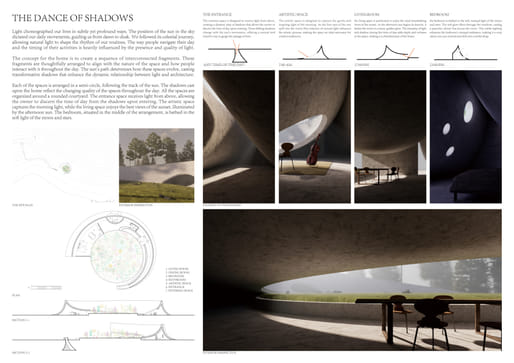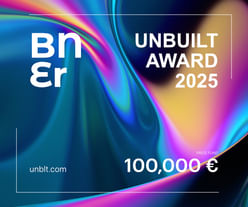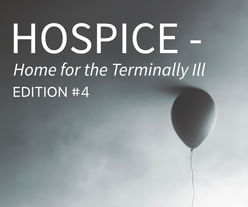

To design a space entirely bereft of artificial light is a unique challenge for architects. The answers to such a brief have just been shared as the winning results of The Home of Shadows design ideas competition, organized by Buildner to highlight the role light and shadow play in creating better functional and more inviting living spaces for their occupants.
Participants in the now second edition of this contest were tasked with designing a home sans the incorporation of any artificial light. The jury sought concepts that "demonstrated how natural light could shape architectural decisions."
What came out was a blend of artistic and inspiring designs hailing from South Korea, China, Serbia, and Argentina, respectively.
1st Prize: Dancing Flow
Designers: Haneul Kim, Sayun Park, and Eunbi Lee (South Korea)

The jury says: "'Dancing Flow' is located in Jinju, South Korea. Utilizing Jinju's abundant sunlight, the house features a linear open floor plan with varied walls and openings. The curved bedroom walls provide privacy while welcoming morning light, guiding the couple from the bedroom through shadowed dressing rooms to softly lit bathrooms. The courtyard, framed by polycarbonate walls, creates a restful ambiance with delicate, time-dependent lighting effects. Functional spaces are designed with light considerations: the south-facing living room is bright yet shielded from glare, the kitchen optimally uses light at specific times, and the workroom and meditation room use light and shadow to create distinct atmospheres for productivity and introspection. The design harmonizes daily emotions with essential life functions." Read the team's 1st Prize interview here.
2nd Prize + Student Award: The Dance Of Shadows
Designer: Yufei Dong, Southeast University (China)

The jury says: "'Dance of Shadows harnesses natural light to shape the daily rhythms of its occupants. The design aligns spaces with the sun's path, creating dynamic, interconnected fragments that evolve with the changing light. Organized around a rounded courtyard, the home features an entrance illuminated from above, where shadows indicate the time of day. The artistic space captures the gentle morning light, fostering creativity. The living room is positioned to bask in the warm, golden glow of the sunset, enhancing its ambiance. The bedroom, centrally located, is bathed in the tranquil light of the moon and stars, providing a serene environment for rest. This thoughtful arrangement highlights the profound relationship between light, shadow, and architecture, enhancing the daily experience of its residents." Read Dong's 2nd Prize interview here.
3rd Prize: Shamash - The Shade Of The Sun
Designer: Mladenka Doric, Miroslav Lukic, Kristina Pajic, and Aleksandar Tesic, Fakultet Tehničkih nauka u Novom Sadu (Serbia)

The jury says: "'The shade of the sun' centers around a home designed to synchronize with the Sun's path, creating a rhythmic living experience akin to clockwork. The house features concentric circles that mimic a temple-like atmosphere, with strategically pierced openings in the walls to filter sunlight. Inspired by Mesopotamian maze-like structures, the circular floor plan captures varying spatial depths under a single roof. To reach the central fire pit, symbolizing the hearth, one must traverse a path through water, which sustains both vegetation and residents. Emphasizing the interplay of light and shadow, each room is treated as an individual entity, resulting in diverse shadows that highlight the vitality of life within the enclosed oasis." Read the team's 3rd Prize interview here.
Sustainability Award: Komorebi House
Designer: Natalia Belén Marino (Argentina)

The jury says: "This project explores the coexistence of nature and humans by focusing on light as a structural element of visibility and comfort. It addresses challenges in environments with limited natural light, balancing natural habitat with the necessary protection and visibility for societal development. The design situates itself in complex terrain where light and habitat coexist in a metastable relationship, demanding a unifying approach. Light is taken as the organizing principle, with direction and position as key elements. The central axis directs light, a linear sequence reflects time, and a dome covers the controllable habitat, forming a space surrounded by pure light. This habitat modulates visibility to create environments with specific uses and functions, demonstrating the potential for harmonious coexistence between light and habitat." Read the Sustainability Award winner interview here.

100,000 € Prize / Buildner's Unbuilt Award 2025
Register by Thu, Oct 30, 2025
Submit by Thu, Nov 20, 2025

Design and Build Student Competition- "Sacred Geometry: Platonic Solids"
Register/Submit by Sat, Apr 19, 2025

MICROHOME Kingspan 2024/25
Register by Thu, Feb 13, 2025
Submit by Tue, Mar 18, 2025

Hospice - Home for Terminally Ill #4
Register by Thu, Mar 13, 2025
Submit by Mon, Jun 16, 2025
No Comments